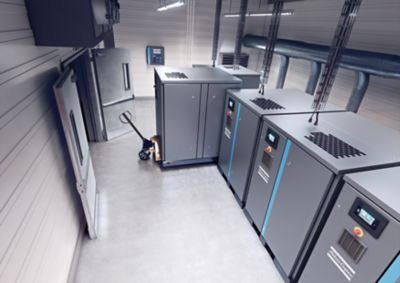Using nitrogen instead of oxygen in PCB assembly has many benefits, including low oxide and its inert properties, and minimal heat and dross generation. In this article, we explain the reasons for not using air (and the oxygen it contains) specifically.
You’ll learn about the reasons to choose nitrogen over air for reflow, wave, and selective soldering, which are used in printed circuit board (PCB) manufacturing. With that, the right type you use will depend on whether PCB production uses through-hole technology (THT) or surface mount technology (SMT). You can learn about the differences between the two in this article.
Let's see now how oxygen leads to corrosion in PCB assembly, followed by more on why nitrogen is used. We'll also briefly discuss the benefits of on-site nitrogen generation. You'll find related information below.
Avoid PCB assembly corrosion
As PCBs are integral in the production of electronics for the growing electronic manufacturing services (EMS) market, it's important to follow best practices. This includes not using compressed air for soldering, as it contains oxygen, which in turn contains oxides. Oxidation can lead to dross.
Dross is contaminated material that can form during the soldering process. It can break down communication between components on a PCB. In addition, weakened solder joints may result from dross. This is one of many reasons why it's important to avoid the presence of oxygen.
Another point worth mentioning is that oxides can impact the integrity of the soldering tips, negatively affecting production quality. With the EMS sector becoming more competitive, you don't want to harm your business' reputation.
Why nitrogen is used
Like said above, PCBs are part of the EMS market. With that, EMS companies develop products for original equipment manufacturers (OEMs). These are companies that make sure all components fit perfectly in a completed product and handle overall assembly. As an example, an electric vehicle (EV) brand is considered an OEM.
When considering this, EMS companies want to ensure the best conditions for assembly. Nitrogen allows for this due to the following reasons.
- Improves solder wetting for reflow and wave soldering
- Reduces overall soldering defects in reflow and wave soldering
- Lowers cost of ownership in reflow and wave soldering
- Wider process window
- Increases productivity
You might notice reflow and wave soldering are mentioned. These are commonly used for SMT and THT, respectively. With that, selective soldering is similar to wave soldering and is also used for THT. The key differences between reflow and wave/selective is that reflow involves hardening solder adhesive. Wave and selective soldering involve a PCB passing over the solder.
As these processes require optimal conditions, you want solder to be wet to extend flux activity. This leads to reduced defects, and better joint quality. Also, since nitrogen produces less dross, this means less rework is necessary – resulting in lower costs. You're likely to get things right the first time around with high quality nitrogen.
High quality PCBs with on-site nitrogen generation
The best way to control your nitrogen supply is with on-site nitrogen generation. It allows you to set the required conditions for production like flow and purity and you'll always have readily available gas.
Besides, it will be more cost efficient, as you won’t need to facilitate delivery with trucks and you will have the most suitable purity for your own process, resulting in a lower gas cost.
You might want to consider a generator using Pressure Swing Adsorption (PSA) technology for optimal performance.
Do you want to learn more about Nitrogen Generation?
Read more about Nitrogen generation on our eBook:
We're here to help
Would you like any additional assistance? Click the button below and one of our experts will contact you shortly.


